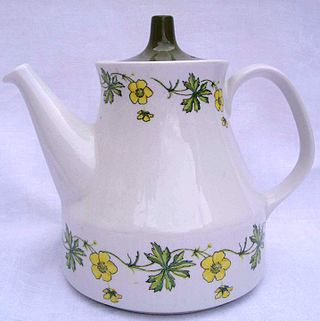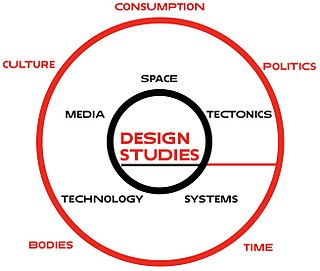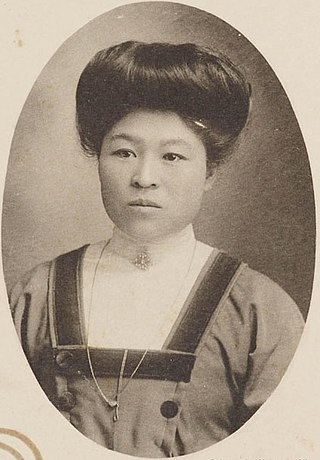
A design is a plan or specification for the construction of an object or system or for the implementation of an activity or process or the result of that plan or specification in the form of a prototype, product, or process. The verb to design expresses the process of developing a design. In some cases, the direct construction of an object without an explicit prior plan may also be considered to be a design activity. The design usually has to satisfy certain goals and constraints; may take into account aesthetic, functional, economic, or socio-political considerations; and is expected to interact with a certain environment. Typical examples of designs include architectural and engineering drawings, circuit diagrams, sewing patterns and less tangible artefacts such as business process models.
Within a capitalist economic system, commodification is the transformation of things such as goods, services, ideas, nature, personal information, people or animals into objects of trade or commodities. A commodity at its most basic, according to Arjun Appadurai, is "anything intended for exchange," or any object of economic value.

Florence Marguerite Knoll Bassett was an American architect, interior designer, furniture designer, and entrepreneur who has been credited with revolutionizing office design and bringing modernist design to office interiors. Knoll and her husband, Hans Knoll, built Knoll Associates into a leader in the fields of furniture and interior design. She worked to professionalize the field of interior design, fighting against gendered stereotypes of the decorator. She is known for her open office designs, populated with modernist furniture and organized rationally for the needs of office workers. Her modernist aesthetic was known for clean lines and clear geometries that were humanized with textures, organic shapes, and colour.
An arts district or cultural district is a demarcated urban area, usually on the periphery of a city centre, intended to create a 'critical mass' of places of cultural consumption - such as art galleries, theatres, art cinemas, music venues, and public squares for performances. Such an area is usually encouraged by public policy-making and planning, but sometimes occurs spontaneously. It is associated with allied service-industry jobs like cafes, printers, fashion outlets, restaurants, and a variety of 'discreet services'.

François Xavier Bon de Saint Hilaire (1678–1761), president of the Court of Auditors of Montpellier, demonstrated in 1709 that he could make fabric from spider silk. Many egg cocoons were boiled, washed and dried and the thread was collected with fine combs. By this method, he produced three pairs of spider silk stockings and gloves. He presented one pair to Hans Sloane at the Royal Society in London and the remaining two to the Académie Royale des Sciences in Paris. He also claimed to have manufactured medicines from spiders which could cure apoplexy, lethargy, and coma. His report, published in 1710, was republished several times and was translated into several languages including Chinese. Bon de Saint Hilaire also made one of the first ventures into the mass-cultivation of spider silk, keeping the creatures in crates of fifty and one-hundred, only to find, upon returning after a considerable duration, that the spiders had thinned themselves out to a mere few remaining members.

Henryk Tomaszewski was an award-winning poster artist and the "father" of the Polish Poster School.
The Design History Society is an arts history organisation founded in 1977 to promote and support the study and understanding of design history. The Society undertakes a range of charitable activities intended to encourage and support research and scholarship, to offer information and create networking opportunities, to foster student participation and public recognition of the subject, and to support regional links and events. The Society welcomes members from related disciplines such as anthropology, architecture and art history, business history, the history of science and technology, craft history, cultural studies, economic and social history, design and design management studies. An elected Executive Committee and Board of Trustees works to enable the activities of the Society, and to ensure that design history is appropriately represented in higher education and research bodies in the UK.
Ecological design or ecodesign is an approach to designing products and services that gives special consideration to the environmental impacts of a product over its entire lifecycle. Sim Van der Ryn and Stuart Cowan define it as "any form of design that minimizes environmentally destructive impacts by integrating itself with living processes." Ecological design can also be defined as the process of integrating environmental considerations into design and development with the aim of reducing environmental impacts of products through their life cycle.

Figgjo AS is a Norwegian ceramics manufacturing company based in Figgjo in the municipality of Sandnes, Norway.

Culture is an umbrella term which encompasses the social behavior, institutions, and norms found in human societies, as well as the knowledge, beliefs, arts, laws, customs, capabilities, and habits of the individuals in these groups. Culture is often originated from or attributed to a specific region or location.
Catherine Bertola is a British artist. Based in Newcastle upon Tyne, her works consist of drawings, objects and installations which often draw upon history, collections and people. Bertola studied Fine Art at Newcastle University before going on to work on multiple commissions and exhibitions both nationally and internationally.
The Men's Dress Reform Party (MDRP) was a reform movement in interwar Britain. While the party's main concerns were the impact of clothes on men's health and hygiene, their mission also aimed to increase the variety and choice in men's clothing.
Elizabeth Anne McCauley is an art historian. She serves as David Hunter McAlpin Professor of the History of Photography and Modern Art at Princeton University.

Design studies can refer to any design-oriented studies but is more formally an academic discipline or field of study that pursues, through both theoretical and practical modes of inquiry, a critical understanding of design practice and its effects in society.
Design culture is an organizational culture focused on approaches that improve customer experiences through design. In every firm, the design is significant since it allows the company to understand users and their needs. Integration of design culture in any organisation aims at creating experiences that add value to their respective users. In general, design culture entails undertaking design as the forefront of every operation in the organisation, from strategy formulation to execution. Every organisation is responsible for ensuring a healthy design culture through the application of numerous strategies. For instance, an organisation should provide a platform that allows every stakeholder to engage in design recesses. Consequently, everyone needs to incorporate design thinking, which is associated with innovation and critical thinking.
Magdalena Fürstin (1652–1717) was a German artist and hand-colourist. She was from Nuremberg, and was a pupil of John Fischer and Maria Sybilla Merian.
Else Unger was an Austrian designer of the decorative arts. Unger was connected to the Vienna Secession movement.

Inokuchi Akuri (井口阿くり) was a Japanese physical educator.
Speculative design is a design practice that is concerned with future design proposals of a critical nature. The term "speculative design" was popularised by Anthony Dunne and Fiona Raby as a subsidiary of critical design. The aim is not to present commercially-driven design proposals but to design proposals that identify and debate crucial issues that might happen in the future. Speculative design is concerned with future consequences and implications of the relationship between science, technology, and humans. It problematizes this relation by proposing provocative future design scenarios where technology and design implications are accentuated. These provocative design proposals are meant to trigger the debate about future challenges. Speculative design proposals might seem subversive and irreverent in nature as they are meant to initiate discussions not to be market products.
Richard Malin Ohmann was an American literary critic.







